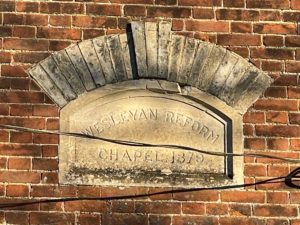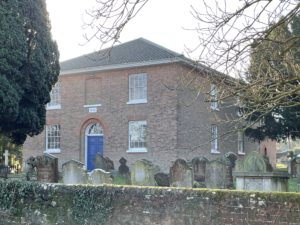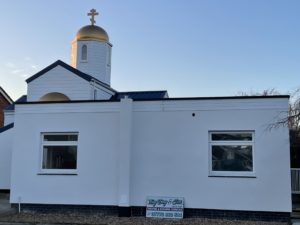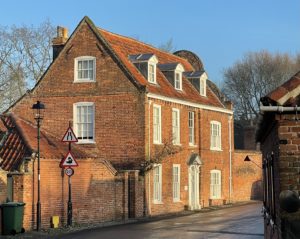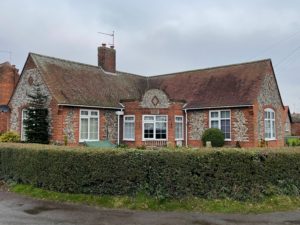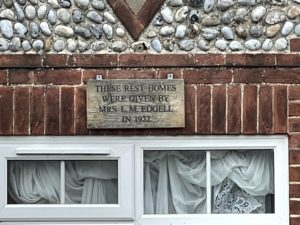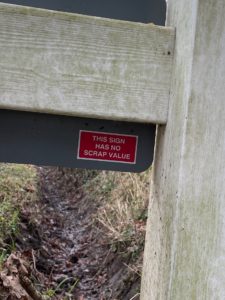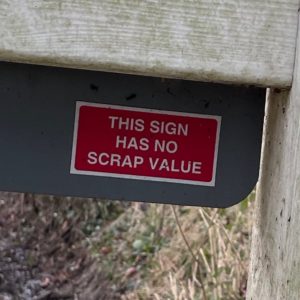In which Doris takes some time off looking at her feet to think about the local area.
A random collection of thoughts from Doris including: Norfolk non-conformism, the Dutch; almshouses; larceny; the difference between a broad and a fen; famous (wo)men.
Norfolk non-conformism
Voltaire’s writes in his Philosophical Letter “On the Presbyterians”: “If there were only one religion in England, there would be danger of tyranny; if there were two, they would cut each other’s throats; but there are thirty, and they live happily together in peace.”
Apart from the usual set of CofE and Catholic churches, we spotted Wesleyan Reform, The Tabernacle, Baptist and Greek Orthodox churches. There will have been many many others just a few yards off our route… probably as many as thirty.
The Dutch
It’s wet, it’s flat, and it’s just across the North Sea which is relatively easy to cross by boat on a nice day. No wonder there was a lot of exchanging of engineering ideas.
Almshouses
I do love a good almshouse. I especially love the one near us in Bishop’s Stortford which was “Endowed by Sir William Terribly ImportantPerson, Bart, etc, In Memory Of His Wife”. Who obviously wasn’t so memorable that he knew what her name was.
Larceny
There is obviously some terrible problem with people stealing inoffensive little road signs in this apparently peaceful rural idyll. On the back of the Broads National Park sign is a grumpy little sticker “This sign has no scrap value”.
What is the difference between a broad and a fen?
So, we have cycled through the fenlands of Cambridgeshire and walked through the broadlands of Norfolk.
Turns out a fen is the dry (if squishy) bit between the drainage channels, while a broad is the wet bit between the dry (or current, squishy) land.
Another one for the pub quiz, I think.
Let us now praise famous (wo)men
Lots of famous people came from Norfolk, although they didn’t necessarily become famous in Norfolk. In 1792 Nelson was 32 years old and probably attending dances all over Norfolk, as he was in reserve without a ship, from 1787 to 1793, and he moved back home to live locally at Burnham Thorpe from 1788. He also wasn’t actually made an admiral until 1797 btw. Anyway it’s a nice sign and it was a very friendly pub/hotel.
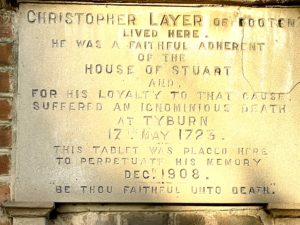 Charles Stuart also features round here, with many pubs called the Black Boy, and other references. One of his supporters is commemorated on this poignant but sadly rather illegible plaque. “Christopher Layer of Booton lived here. He was a faithful adherent of the House of Stuart and for his loyalty to that cause, suffered an ignominious death at Tyburn 17th May 1723.”
Charles Stuart also features round here, with many pubs called the Black Boy, and other references. One of his supporters is commemorated on this poignant but sadly rather illegible plaque. “Christopher Layer of Booton lived here. He was a faithful adherent of the House of Stuart and for his loyalty to that cause, suffered an ignominious death at Tyburn 17th May 1723.” And finally, it’s not just famous men. Anne Sewell who wrote Black Beauty was born here in Great Yarmouth.
And finally, it’s not just famous men. Anne Sewell who wrote Black Beauty was born here in Great Yarmouth.